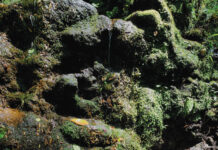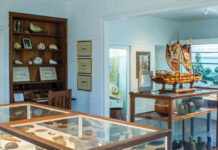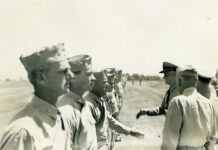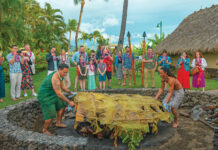Story by Matthew Thayer
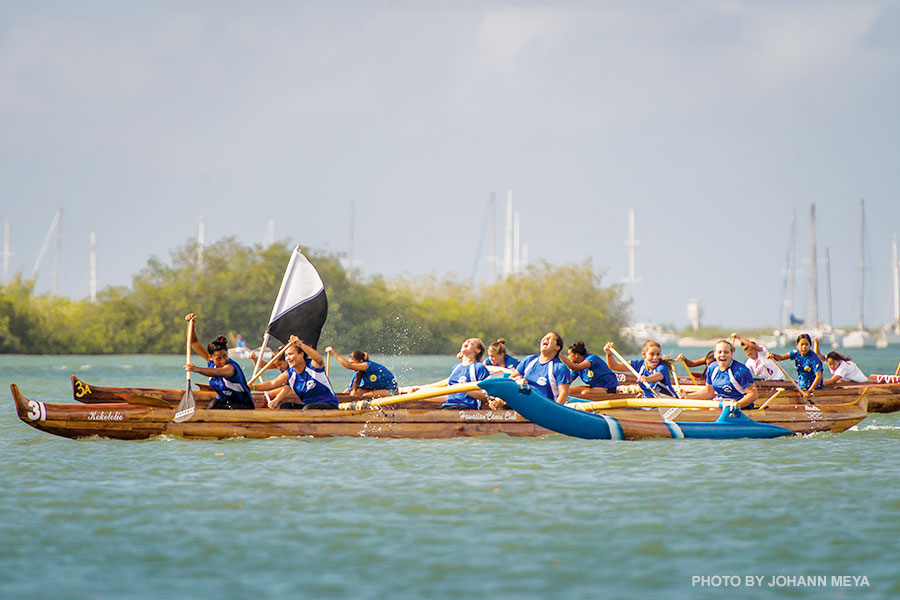
It is a calm Ka‘anapali morning as paddlers in the under-twelve age group pile into their clubs’ outrigger canoes and stroke to the lanes assigned for their quarter-mile race, one of forty-six events that crews of all ages will complete during the daylong regatta. Guided by steersmen and –women, paddlers skillfully guide their long, brightly colored canoes to the proper lanes, back paddling to a halt just behind the starting line.
At the wave of a green flag, the kids turn the water to froth, propelling their crafts to top speed. Before long, repeating a sight that has vexed competitors around the state for years, the blue canoe from Maui’s Hawaiian Canoe Club steadily pulls away to win.
After the race, they return to the beach, but there’s no time for most of the kids from Hawaiian Canoe Club to pick up their first-place medals. For those enrolled in the summer Kamali‘i Program, the challenge is just beginning.
After a few hugs and quick goodbyes from anxious moms, the ten- and eleven-year-old paddlers are back in their canoes. They scoot across regatta lanes between races to join a flotilla of support boats making the program’s yearly open-ocean crossing to the island of the Lanaʻi. Seventy youngsters in rotating crews make the crossing, inspiring twinges of envy among the paddlers and coaches watching from shore. The adults know the kids are setting off on much more than an adventure; they are beginning a cultural and personal exploration that may well change their lives.
Arianna Gerry was an eleven-year-old steerswoman when she first crossed the nine-mile, blue-water ‘Auʻau Channel and rounded the towering sea cliffs of Lanaʻi to reach Manele Bay. “It was probably one of the scariest experiences of my life, but it bonded my team,” Gerry recalls. “To go out on the open ocean as an eleven-year-old, you have to trust the people in the canoe with you. To find that kind of confidence helped me develop my skills as a keiki [youth], and even until now.”
At twenty-five, Gerry has won six state championships as a steerswoman for Hawaiian Canoe Club crews, steered for clubs when she lived in Florida and California, and currently serves as Hawaiian’s club manager. It is no coincidence that a Kamaliʻi product has continued to play a role with the club as an adult. Hawaiian’s coaching ranks are filled with paddlers who came up through the free program.
This summer marks the twenty-third year Kamaliʻi will bring lessons together seventy Maui kids, ages ten to fourteen, to learn about water safety, navigation, food preparation, sustainable practices, and, most of all, Hawaiian values and history. It is deeply meaningful that a canoe club has become the vessel for teaching island children about Hawaiian culture. Canoes are how Hawaiians reached these far-flung Pacific islands long ago. Canoes figured hugely in trade, war and food gathering in pre-Contact Hawaiʻi. It was a voyaging canoe, Hokule‘a, that launched the Hawaiian Renaissance of the 1970s and continues to be a touchstone of island pride.
The seven-week Kamaliʻi Program is not only steeped in Hawaiian history, it aspires to ensure a positive future for the Islands. Each day begins and ends with an oli, or chant, features two hours of classroom work, and also plenty of time on the water. One of the core Hawaiian values taught by the Kamaliʻi Program is respect for elders. If a child is to be trusted to cross the cobalt waters of island channels or help work the taro patches deep in Molokaʻi’s Halawa Valley, he or she must be able to respond to instruction without question — even if it is coming from a youth leader who is only a few years older.

